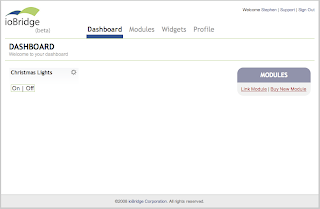For example, I have a RequiredFieldValidator Validation control on the page. ConfirmButtonExtender should not display even though I click the submit button untill I input something in the TextBox.
See the code:
<body>
<form id="form1" runat="server">
<ajaxToolkit:toolkitscriptmanager runat="Server" EnablePartialRendering="true"
ID="ScriptManager1" />
<asp:TextBox ID="TextBox1" runat="server" ></asp:TextBox>
<asp:RequiredFieldValidator ID="RequiredFieldValidator1" runat="server" ErrorMessage="RequiredFieldValidator" ControlToValidate="TextBox1"></asp:RequiredFieldValidator>
<asp:Button ID="Button" runat="server" Text="Click Me" OnClientClick="disableSubmit();return false;" OnClick="Button_Click" /><br />
<br />
Server Time Refresh: <asp:Label ID="Label1" runat="server" Text=""></asp:Label>
<asp:Button ID="HiddenButton" runat="server" Text="Hiddenbutton" style="display:none;" /><br />
<ajaxToolkit:ConfirmButtonExtender ID="ConfirmButtonExtender2" runat="server"
TargetControlID="HiddenButton"
OnClientCancel="cancelClick" BehaviorID="ConfirmButtonBehavior"
DisplayModalPopupID="ModalPopupExtender1" />
<br />
<ajaxToolkit:ModalPopupExtender ID="ModalPopupExtender1" runat="server"
TargetControlID="HiddenButton"
PopupControlID="PNL"
OkControlID="ButtonOk"
CancelControlID="ButtonCancel" BackgroundCssClass="modalBackground"
/>
<asp:Panel ID="PNL" runat="server" style="display:none; width:200px; background-color:White; border-width:2px; border-color:Black; border-style:solid; padding:20px;">
Are you sure you want to click the Button1?
<br /><br />
<div style="text-align:right;">
<asp:Button ID="ButtonOk" runat="server" Text="OK" OnClientClick="onOkScript()" />
<asp:Button ID="ButtonCancel" runat="server" Text="Cancel" />
</div>
</asp:Panel>
</form>
</body>
<script type="text/javascript">
function disableSubmit()
{
if (typeof(Page_ClientValidate)=='function')
{
if (Page_ClientValidate() == true)
{
return checkSubmit();
}
else
{
return true;
}
}
else
{
return checkSubmit();
}
}
function checkSubmit() {
var confirmButton = $find('ConfirmButtonBehavior');
confirmButton._displayConfirmDialog();
}
function onOkScript() {
var confirmButton = $find('ConfirmButtonBehavior');
confirmButton._postBackScript = "__doPostBack(\u0027Button\u0027,\u0027\u0027)"; //reset bind onto Button
}
</script>
<form id="form1" runat="server">
<ajaxToolkit:toolkitscriptmanager runat="Server" EnablePartialRendering="true"
ID="ScriptManager1" />
<asp:TextBox ID="TextBox1" runat="server" ></asp:TextBox>
<asp:RequiredFieldValidator ID="RequiredFieldValidator1" runat="server" ErrorMessage="RequiredFieldValidator" ControlToValidate="TextBox1"></asp:RequiredFieldValidator>
<asp:Button ID="Button" runat="server" Text="Click Me" OnClientClick="disableSubmit();return false;" OnClick="Button_Click" /><br />
<br />
Server Time Refresh: <asp:Label ID="Label1" runat="server" Text=""></asp:Label>
<asp:Button ID="HiddenButton" runat="server" Text="Hiddenbutton" style="display:none;" /><br />
<ajaxToolkit:ConfirmButtonExtender ID="ConfirmButtonExtender2" runat="server"
TargetControlID="HiddenButton"
OnClientCancel="cancelClick" BehaviorID="ConfirmButtonBehavior"
DisplayModalPopupID="ModalPopupExtender1" />
<br />
<ajaxToolkit:ModalPopupExtender ID="ModalPopupExtender1" runat="server"
TargetControlID="HiddenButton"
PopupControlID="PNL"
OkControlID="ButtonOk"
CancelControlID="ButtonCancel" BackgroundCssClass="modalBackground"
/>
<asp:Panel ID="PNL" runat="server" style="display:none; width:200px; background-color:White; border-width:2px; border-color:Black; border-style:solid; padding:20px;">
Are you sure you want to click the Button1?
<br /><br />
<div style="text-align:right;">
<asp:Button ID="ButtonOk" runat="server" Text="OK" OnClientClick="onOkScript()" />
<asp:Button ID="ButtonCancel" runat="server" Text="Cancel" />
</div>
</asp:Panel>
</form>
</body>
<script type="text/javascript">
function disableSubmit()
{
if (typeof(Page_ClientValidate)=='function')
{
if (Page_ClientValidate() == true)
{
return checkSubmit();
}
else
{
return true;
}
}
else
{
return checkSubmit();
}
}
function checkSubmit() {
var confirmButton = $find('ConfirmButtonBehavior');
confirmButton._displayConfirmDialog();
}
function onOkScript() {
var confirmButton = $find('ConfirmButtonBehavior');
confirmButton._postBackScript = "__doPostBack(\u0027Button\u0027,\u0027\u0027)"; //reset bind onto Button
}
</script>
protected void Button_Click(object sender, EventArgs e)
{
Label1.Text = "You clicked the " + ((Control)sender).ID + " at " + DateTime.Now.ToLongTimeString() + ".";
}
{
Label1.Text = "You clicked the " + ((Control)sender).ID + " at " + DateTime.Now.ToLongTimeString() + ".";
}

























